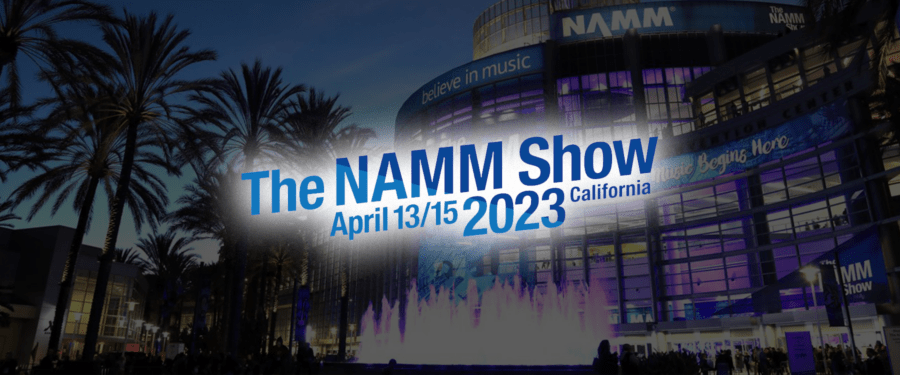NAMM 2023 Saxophone Gear Roundup
Introduction
It’s been over two years since I last attended the NAMM (aka National Association of Music Merchants). As we all know, a lot of changes have happened with Covid and the resulting economic challenges, but that’s not the focus here. In this article, we are focused on what’s new with the saxophone.
I was able to speak with various vendors and manufacturers to better understand how the NAMM show has been over the past two years and the overall feedback has been the attendance has greatly dropped with one of the main reasons being the changes to the time of year that the NAMM show has been held.
In 2022, the NAMM was held in June, and in 2023, the NAMM show occurred this past April. Next year’s NAMM show will be in January as it has been historically and it appears to be four days instead of this year’s three days. I hope from a vendor and attendee standpoint that this drives more visitors and traffic to the show, but we will see.
I will say, even though the attendance was much lower than past NAMM shows I have attended, it did allow me more opportunities to connect and have in-depth conversations with both new and familiar musicians, vendors, and manufacturers, which was a lot of fun. For me, one of the best parts of attending NAMM is the connections you make. So, I will be covering the saxophone gear I had the chance to test play in the realm of saxophones, accessories, reeds, and mouthpieces.
To those sax-related manufacturers and vendors I spoke with who may be reading this article, if your product was not included, it simply came down to time. That said, please feel free to reach out and I will be more than happy to learn more about your product and consider for further review.
The gear breakdown is as follows:
- Saxophones
- Accessories
- Reeds
- Mouthpieces
Saxophones
Selmer Supreme Tenor Saxophone
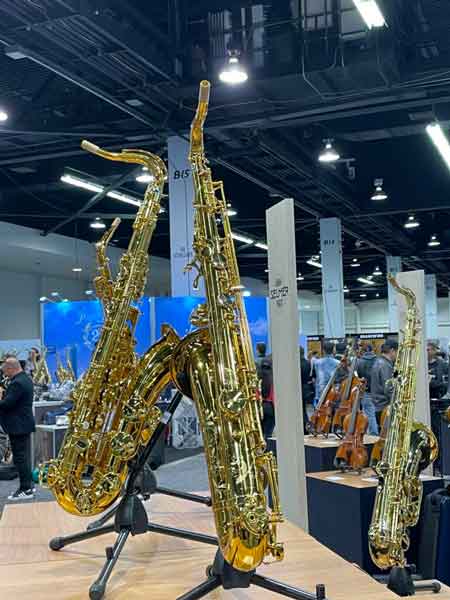
From a saxophone standpoint, the Selmer Supreme tenor saxophone was Selmer’s big release at the 2023 NAMM show. At the Conn-Selmer booth this year they had 3 tenors from what I saw – two with the regular lacquer finish and one with the antique finish, which I unfortunately did not get the chance to play, but the finish was identical to what you would see on the Reference 54 and even 36 model.
I did have a chance to play test one of the lacquered tenors. When it came to the ergonomics and setup, I was quite pleased with the Supreme as it felt quite comfortable to get around from low Bb to high F# and even into the altissimo range. I found the Supreme keywork to be superior to the Reference 54 and 36 models of the past. The right hand palm keys were redesigned and felt more comfortable and easy to get around as well as the left pinky keys felt smooth and more compact compared to other modern Selmer models.
I was able to speak with Florent Milhaud, who works at Selmer and he told me how the Supreme is a completely new saxophone, and not based on the Series II or Series III. Florent mentioned that the creation of the Supreme has been in the works for many years and the goal is, after the tenor is released, to work on a Supreme soprano and baritone saxophone to complete the lineup. Florent told me the design for the bell, body, bow, and neck are completely different from other Selmer models.
Some features he noted included the nickel silver tightening ring, the direct adjustment arm between the right hand F# and F keys, the 3-point concentric clamp ensuring a better hold between the neck and body, and the octave key system which results in less movement, noise, and wear – to name just a few new features.
Sonically, I found the Supreme to be quite flexible and not leaning on the brighter nor darker side. In terms of edge and core to the sound, I found this quite easy to achieve on the Supreme at various dynamic levels. The balance between the low, middle, and upper stack was consistent and stable.
Finally, the finish and engraving is quite different from the traditional floral designs; these floral design and shapes looked more modern versus traditional, and were quite detailed and intricate. I will say, similar to the Reference 54, the Selmer Supreme is in my personal opinion is one or the best looking modern saxophones on the market today.
Overall, I think the Selmer Supreme tenor is a move in the right direction for Selmer, offering something that both classical and jazz musicians will enjoy. Now, what I will say, and probably what most players will say as well, is at a $10,600+ price tag, the Selmer Supreme better be the best modern tenor you’ve ever played. In reality, for me the Selmer Supreme is the best modern Selmer tenor that I have played to date. But, is it better than a really good Mark VI or Selmer Super Balanced Action? That is hard to say. From my experience although the modern keywork and innovations on the Supreme are clearly ahead of the vintage Selmers, I have played some great Mark VIs and Selmer Super Balanced Actions within a similar price range that sonically, I found embodied more character and depth. But there are tradeoffs with any saxophone.
If you are in the market for a new saxophone and have a “sky’s the limit” budget, then I would recommend trying the Selmer Supreme tenor. If you are trying to decide between the Selmer Supreme or a vintage Selmer, I’d recommend looking at both because at this price point, you should be able to pick up a good condition vintage VI or SBA, so that’s something to consider for you big spenders out there.
Eastman EST852 52nd Street Tenor Saxophone
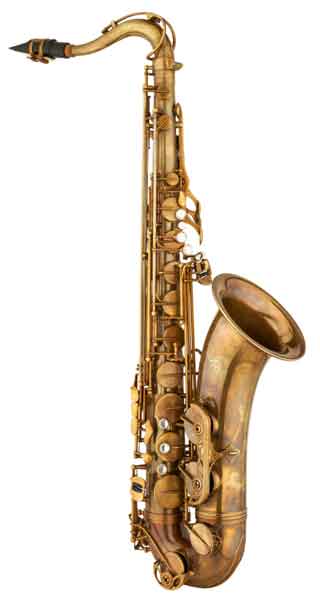
I was excited this year to see that Eastman took the key work found on the Rue Saint-Georges models and applied it to the new EST852 52nd Street tenor saxophone. While at the Eastman booth, I was able to catch up with Ralph Torres ,who explained to me that the new Eastman 852 52nd street tenor is not just borrowing the key work from the Rue Saint-Georges models, but also includes some other new enhancements.
The EST 852 employs rolled tone holes on the lower stack from low Bb to I believe E or F and then the rest of the tone holes are straight. The belief there was the rolled tone holes helped with the pads sealing on the bottom end. By not employing rolled tone holes throughout, it removes a little bit of weight. To me, it seemed as though the horn spoke better in the mid and upper registers.
By collaborating with Bob Mintzer, one of Eastman’s flagship artists, they released the new M neck. Ralph told me Bob found this neck taper and design gave him a broader and more open sound versus the standard S neck which some players may find a bit more focused, but at the same time a bit more resistant than the M neck.
In addition, the bell flare on the new 852nd street tenor is slightly larger than the original 52nd Street, and there have been some updates to the materials used when crafting the neck, body, and bell, with those changes being the sorts of modifications you see from most manufacturers trying to replicate the vintage horns of the past.
When I tried the EST 852 tenor, to me, it truly was night and day in comparison to the original 52nd Street saxophone. The new M neck had the right amount of resistance to the point where you could push the horn to really project, but at the same time the sound wasn’t too broad and had nice direction and focus to the sound.
From playing the Rue Saint-Georges models, I really liked the key work, which felt comfortable. With the key heights feeling a little bit lower, I could get around the horn quite quickly. But, I know lower versus higher key heights is a personal preference.
Sonically, I found the 852 tenor to have a nice balance throughout all the registers, with the sound between more neutral to a little bit darker, but this is subjective based on your setup and sound concept.
The overall build quality of the hardware and pads seemed quite good, especially with this model being manufactured by Eastman’s owned factory in Bazhou, China. Eastman does not just oversee quality control but the complete production of the EST852 52nd street tenor saxophone from start to finish. Ralph told me that anyone who buys the ETS8 52nd Street saxophone will receive both the S and M necks so they can choose which one suits their playing preference. The ETS852 52nd Street saxophone is retailing for a little over $5,000 which is similar in price to its competitors such as P Mauriat, Yamaha, Yanagisawa, and Ishimori.
Overall, I am really pleased with the enhancements and improvements I have seen on the new Eastman Winds ETS852 52 Street saxophone. I would highly recommend those of you who were curious about the Eastman line of saxophones to try this new model. Although this won’t be the case for everyone, it is quite possible that you will find it hard to put down.
P Mauriat 20th Anniversary saxophone Limited Edition
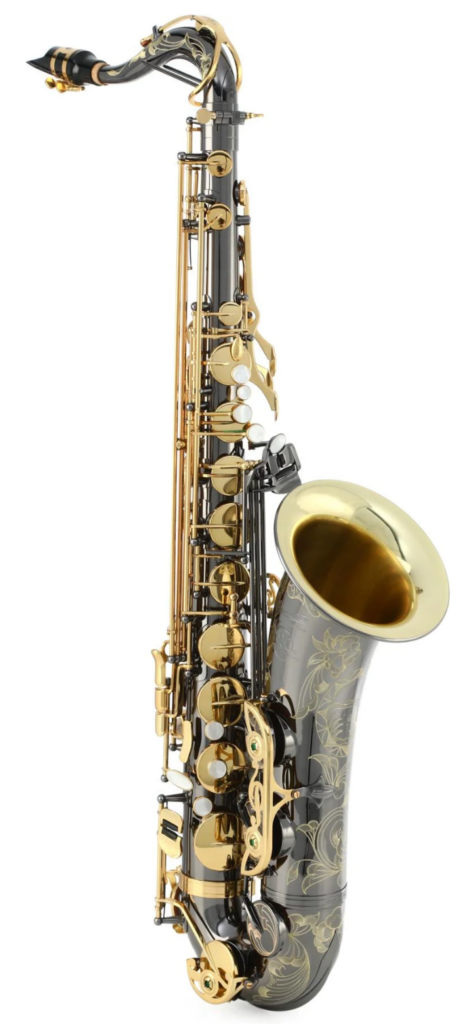
I have tried all the P Mauriat saxophone models from the 66 to 76 to 86 to Master 97 and finally the 600XJ. At this years NAMM Show, there were two new models or more – one Special Edition model and the P Mauriat Derek Brown saxophone (which we’ll get to next). The P Mauriat 20th Anniversary limited edition model was released to celebrate 20 years of instrument development and craftsmanship.
Visually, the P Mauriat 20th anniversary alto and tenor saxophones reminded me very much of the Keilwerth SX90R, thanks to the black nickel finish across the bell, bow, body, and neck paired with gold lacquered keys. This particular anniversary model is made out of brass and is extensively engraved throughout the entire horn from the bell, bow, body, neck, and even the keys. The tenor version includes the Kirk Whalum neck while the alto includes the Super VI neck. I had a chance to test play the tenor version and I found the horn responded just like the P Mauriat 66 model, with a slight difference in resistance in the Kirk Whalum neck compared to the standard Super VI neck.
Overall, if you really like the P Mauriat 66 model but want the special finish, engraving, custom case, and Kirk Whalum neck, then I think you are going to enjoy the 20th anniversary model. On the other hand, if you prefer the 76 2nd Edition model or Master 97 model, then the new 20th anniversary model may not be the right fit for you.
P Mauriat System 76 Derek Brown BeatBox Sax
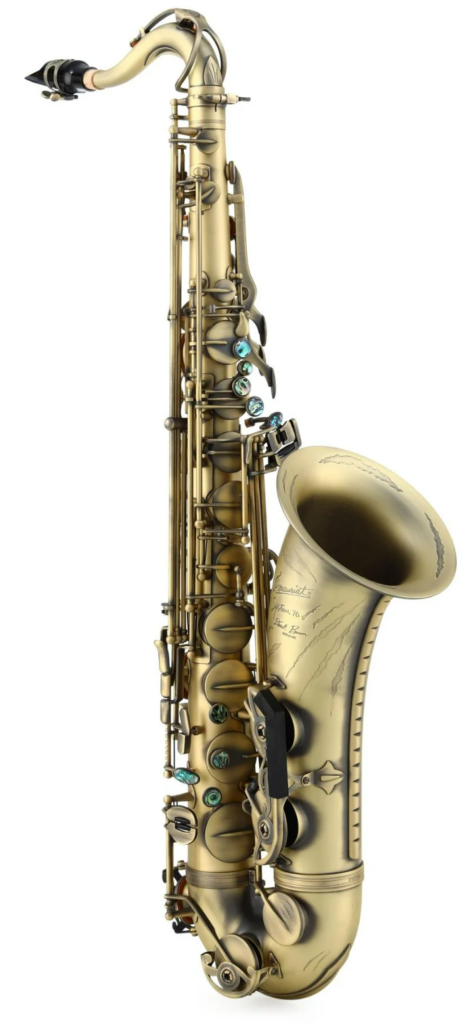
Unlike the other P Mauriat models offered today, the Derek Brown Beatbox tenor saxophone is truly unique. I am familiar with the 76 model which is essentially what this saxophone is, but…the key-work is completely unique and specific to how Derek Brown plays.
Some of the key work on this horn is unlike anything I have ever seen. For example, this model includes a couple of rings that you would place on your thumb and ring finger so you can tap these rings across various parts of the saxophone to make additional sounds. This model comes with two thumb hooks, one being standard and the other being shorted, so you would drag your thumb across to make additional sounds.
In addition, this saxophone includes a 3-ring strap hook so you can adjust the position of the saxophone depending how you want to play, with the saxophone sitting either higher or lower. The key guard across the low Bb and B keys has a cover to tap against, while the bell has additional bracing so that you can tap or roll your thumb or ring finger across it to make various rhythms as you play.
Another unique feature is the leg guard you can detach which has a mix of loose screws that allows you to “vibraslap”, as Derek describes it, giving you more options to add various beats and rhythmic tools to his playing. The alternate F# rod is actually ribbed so if you roll your finger across it, you get this guiro type of effect while playing. There are a mix of other features on this model, but one quite unique one to me is the left hand key for altissimo F#, which is located right by the octave key, which I have not seen before.
If you are a big fan of Derek Brown and want to get into Beatbox saxophone playing, this model truly is tailored to you. From my experience playing this model, I found that sonically, the saxophone played just like a standard 76 model, which, to me, is more focused in comparison to the 66, which I found to be broader.
Although the key work was unique and specific to beatbox playing, this is not my area of expertise, so I found the standard System 76 2nd Edition key work to be more comfortable in terms of getting around the horn. The left hand key for altissimo F# felt a bit too close to the standard octave key, so it was a key that should be used instead of an alternative fingering. Overall, this is quite unique key work with a specific purpose, so if you are into beatbox saxophone, I would check this model out. Otherwise, I would recommend other models.
Retro Revival “True-Six” Vintage Paris Styled 1950’s Tenor Saxophone

I understand the Retro Revival True-Six was not a new release at this year’s NAMM show, but this was the first time I had a chance to finally play test one. As you can tell by the name, Retro Revival’s Tru-Six is focused on recreating the sound, look, and feel of those sought after vintage Mark VI’s from the 1950’s. Retro Revival CEO, Joel Peskin along with Bob Sheppard partnered with repairman Ken Beason and the Weissenberg saxophone manufacturer to produce the True-Six.
Now, over the past few years, I have seen quite a few saxophones coming from various Taiwanese manufacturers that claim to be a replica or copy of a Mark VI, SBA, or a modified version of the Mark VI that players who can’t afford the high price of a Mark VI or an SBA will be able to buy something very similar at a much lower price point. After getting a chance to play the Retro Revival Tru-Six, here are my thoughts.
The overall setup, key heights, tone hole placements, mother of pearl, and other parts of the horn felt very comfortable under my hands and very similar to my Selmer Mark VI. Sonically, I found I could get a clean and focused sound which when pushed, would have some edge.
I have played other saxophones that have been louder, brighter, darker, etc, but I believe this was due to the neck more so than the horn. The True-Six neck allowed me to easily control the sound without it being too free blowing or too resistant and requiring far more air than needed.
What stood out to me with the Tru-Six was the overall action and feel under the fingers. The thumb rest, placement of the neck strap ring, side key designs, bell to body ring, concave mother of pearl key touches, and octave key thumb rest made this horn feel much more like Mark VI’s I have played in the past.
The Tru-Six comes in a vintage cognac lacquer, unlacquered, and french gold lacquer with a floral engraving that is a direct copy of what you’d see on vintage VI’s from the 50’s and early 60’s. I had a chance to play all three versions at the show, and although they seemed to play quite similarly to each other, I found the cognac lacquered model had the best response and feel.
If you own a Mark VI or are in the market for a vintage-style saxophone as a backup for your main horn, I would take a look at the Retro Revival True-Six. The Retro Revival True-Six for me stands out in terms of its look, setup, and parts, and is obviously designed to recreate the look and feel of a Vintage Mark VI.
Now will the True-Six be a replacement for your Mark VI? Maybe yes, maybe no. All I can say is if you are looking for an alternative to a Mark VI due to price but want something that looks, feels, and to me, has a neck taper and resistance level similar to the VI, then the Retro Revival True-Six is a viable modern option.
Rampone & Cazzani Solista Tenor Saxophone
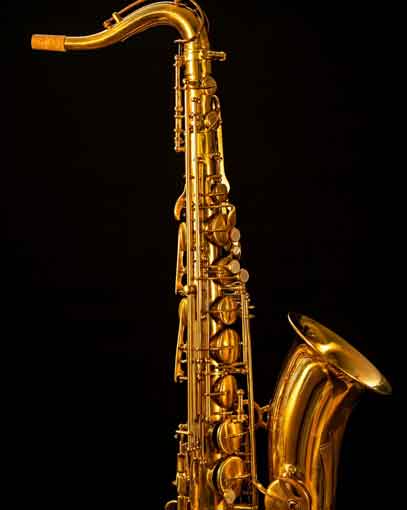
Thoughts
I tried the Rampone & Cazzani Solista at the 2019 NAMM show, and since then, Claudio shared with me that they had just released the tenor version.
What is unique about the Solista saxophone is that it is made of copper, which is then gold plated, unlike traditional brass saxophones. Similar to the alto, the Solista tenor played quite well. I had the chance to try the standard Solista neck, which is also copper and gold plated. Claudio also let me try a sterling silver neck with the same taper, and I felt that it projected even more, but had a different response and feel than the standard neck.
Whether you prefer the Solista model or the R1 Jazz is a matter of personal preference. Both played great from top to bottom, with the keywork being pretty good overall. However, I would have some adjustments made to some of the keys and key heights.
I believe the Solista tenor costs around $7,500+ USD, which is similar in price to the Yanagisawa WO models, which are a combination of brass and sterling silver. For me, the major difference between the Solista and the R1 Jazz is the sound characteristics. The Solista has a clearer and warmer sound, while the R1 has more buzz and edge when pushed.
I want to thank Claudio for taking the time to speak to me about the Rampone & Cazzani Solista tenor saxophone, as well as a few other items that I will discuss below.
Rampone & Cazzani Performance Model
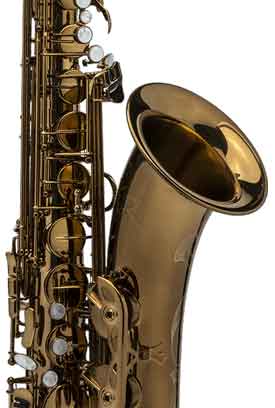
Thoughts
The Rampone & Cazzani (R&C) Performance Model saxophones are available for alto, tenor, and now baritone. I first saw the R&C Performance model a few years ago, but I finally had a chance to play one this year.
My initial impression was that it was Rampone’s solution to offering a more affordable option for players who found the R1 Jazz and other models to be out of their price range but still wanted to play a Rampone & Cazzani saxophone. I spoke with Claudio to find out more if the R&C Performance model was a partnership with a manufacturer in Taiwan to either manufacture the parts or the entire saxophone, which would then be shipped to Rampone for further setup and adjustments.
To my surprise, Claudio informed me that the R&C Performance model is actually manufactured in Italy with different specifications and processes than their R1 Jazz, Solista, etc. models. He told me that this is not a standard Taiwanese saxophone that they are simply stamping their name on. Instead, the bell, bow, body, and neck are different from the other Rampone models, using a traditional bore instead of a larger one. Many of the parts were designed using CAD technology, which streamlined the process of prototyping and testing needed to design the Performance model. Claudio told me that by making just one model, in brass, and with one finish, he was able to reduce the amount of handwork and labor required, which kept the overall production costs down.
When I played the R&C Performance model, I was surprised by how well it played. The horn played evenly from top to bottom, with the overall keywork feeling a bit more streamlined and lighter than the R1 Jazz model. I would say the keywork reminded me of either a Selmer Super Action 80 Series II or III, among some other horns I saw at the show.
The cognac finish with the yin and yang engraving was different from the more traditional floral designs I typically see. Sonically, I found the Performance model to be quite versatile, depending on your setup. You could push it to play darker or brighter, depending on the situation.
In comparison to the R1 Jazz and Solista, I found that the Performance model did not have the same tonal complexity that I have always associated with Rampone & Cazzani saxophones. However, it is still a good horn. If you have played a Rampone before, or are interested in trying one, I think you will really enjoy the traditional Rampone saxophones, which have a larger bore and are made of various materials, such as brass, copper, and sterling silver.
That being said, for a saxophone under $3,000, the R&C Performance model is an excellent option for players on a budget who want to upgrade from their student horn or are looking for a good backup or main horn that won’t break the bank. I would like to thank Claudio for taking the time to share more about the R&C Performance model, and I look forward to playing the entire lineup in the future.
Accessories
Rampone & Cazzani Neck & Mouthpiece Bell Pouch
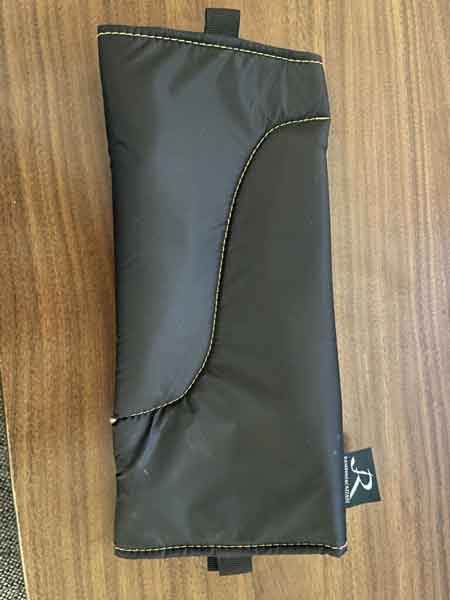
Thoughts
While I was comparing my setup to the Rampone & Cazzani Performance model and Solista, Claudio noticed that I had a bell pouch that I used to store my mouthpiece and neck in the bell of my Boston Sax Shop case. He showed me some of the accessories offered by Rampone & Cazzani, including a mouthpiece and neck pouch combo. My bell pouch was just a neck pouch that I also stuck my mouthpiece in, which was a bit tight. The R&C neck and mouthpiece pouch had ample room to fit both my mouthpiece and neck, and the interior lining was well-cushioned to protect them. The velcro was also easy to open and close.
What I liked about this pouch was that once you put your neck and mouthpiece in, you simply twisted it so that both the mouthpiece and neck would fit snugly and securely in the bell of your saxophone. Although it is a simple accessory, I have not found another mouthpiece and neck combination pouch that works as well and is made of such good material. In the past, I have seen similar accessories, but the quality was mediocre at best.
If you have a saxophone case with limited storage, I highly recommend checking out the Rampone & Cazzani neck and mouthpiece bell pouch. It is a simple accessory, but I wish I had found it years ago.
Reeds
Silverstein Works Alta 2 Classic & Jazz Cut
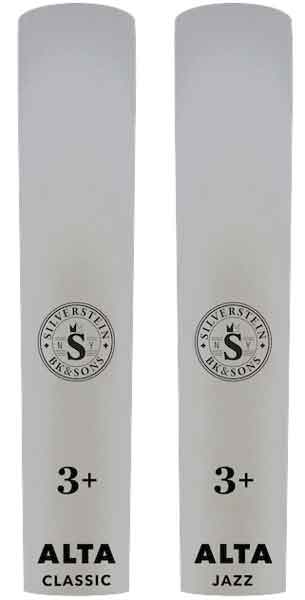
Thoughts
I have tried various synthetic reeds over the years and still come back to cane but I am always open to trying new reed concepts and materials because if I felt a synthetic reed play just as good as cane, I would happily switch. While at the Silverstein Works booth this year, I tried the Classic & Jazz cut Alta reeds which I have played in the past but this was the updated version. The Alta Jazz cut actually felt quite comfortable and pretty balanced from top to bottom but for me the buzz was a little bit too much and I didn’t hear the same timbres I hear on traditional cane. Now with the Classic cut, the response, buzz, and overall feel felt more aligned with what I am used too. I felt with the Classic cut, I was able to produce a cleaner sound without as much buzz but, this reed felt a tad bit harder so it was not as free blowing which I was fine with that. After playing both cuts, I could see myself playing on the Alta Classic cut but it would take me some time to get used to the overall feel and buzz. With that being said, I still find the overall timbre of cane and feel to be more comfortable than various synthetic reeds but the Alta Classic in particular I feel is moving the needle closer and hopefully one day I will simply switch from Cane to synthetic based on all the benefits I would gain.
Mouthpieces
Eric Marienthal Special Tenor Mouthpiece
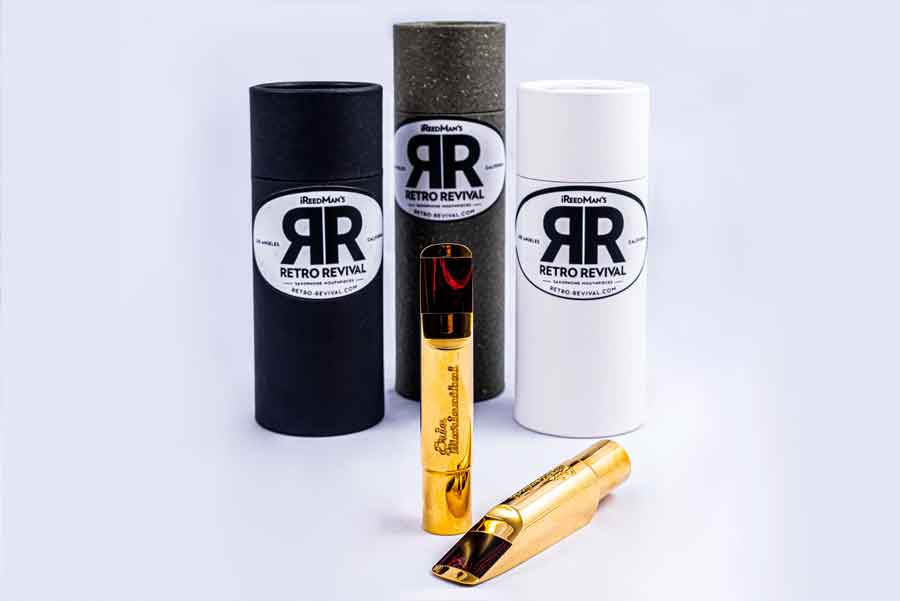
Thoughts
I have tried almost all of the Retro Revival mouthpieces, and I personally like the Tru-Slant and Stubby the most. However, while at the Retro Revival booth this year, I was told to try out the Eric Marienthal tenor mouthpiece. I know Eric is primarily an alto player, but I have seen videos of him playing tenor, and I believe his original tenor mouthpiece was a metal Berg Larsen.
The Retro Revival team told me that the Eric Marienthal tenor mouthpiece is not based on his original Berg Larsen mouthpiece, but is actually quite similar to his alto mouthpiece. The Eric Marienthal tenor mouthpiece was very responsive, similar to what I have found when playing Guardala mouthpieces. The overall balance from top to bottom was pretty good, but I noticed that the altissimo range spoke very well.
The response was a bit too quick for me, and I personally prefer a mouthpiece with a bit more resistance, which makes it easier for me to control. However, I can see a lot of players enjoying this mouthpiece, especially if you want something that you can play loud on, that cuts through, and that leans on the brighter side.
Personally, I still think the Tru-Slant and Stubby suit me best, but that’s not to say that this mouthpiece won’t be highly appealing to other players.
SYOS Max Ionata Signature Tenor Mouthpiece 8*
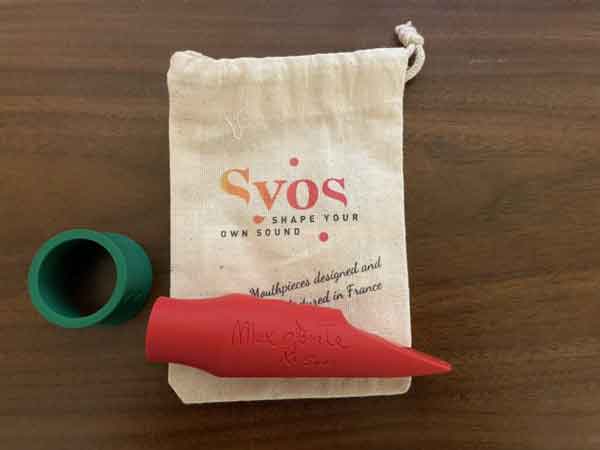
Thoughts
Before checking out the SYOS booth this year to see what was new, I saw that one of my favorite tenor players, Max Ionata, had recently come out with his SYOS signature mouthpiece. I knew I had to try it. I had tried various SYOS Signature pieces in the past, and some I thought played quite well, while others were just okay. But to date, the Max Ionata Signature model is my favorite.
The Max Ionata has a brightness rating of 3.5 out of 10 and a power rating of 6.5 out of 10. It has a step baffle and a small chamber. I would say that this piece responds faster than my Slant, most likely due to the step baffle. Overall, the Max Ionata Signature mouthpiece has more core than spread to the sound, and I found that I could get a very clean but also edgy sound when pushed.
The Max Ionata mouthpiece spoke well from top to bottom, and I found that it was more on the neutral side. However, if I played into the palm keys and above, there was some brightness to the sound. Controlling this piece was quite easy, but I would say that compared to my Slant, which doesn’t have a step baffle, I needed to adjust a little because I didn’t need to put as much air in to get an immediate response.
Overall, I think this is one of the more balanced Signature pieces that SYOS offers. Everyone has their own preferences, but I think for those of you who like Max Ionata’s playing, you will be surprised by his signature piece.
Theo Wanne Brahma Tenor Mouthpiece

I have tried Theo Wanne mouthpieces over the years, and with the constant updates, it can be hard to keep track of which version of a particular Ambika, Lakshmi, Gaia, or Durga I have played in the past. However, I have overall enjoyed each model.
This year, Theo released the Brahma model, which references features from the classic Berg Larsen and Lawton mouthpieces with the flat side walls and small chamber, but with Theo’s various design updates. I really liked the Lakshmi because it reminded me of the vintage Dukoff Stubbys, which are some of my favorite metal mouthpieces. However, the Brahma also impressed me.
Sonically, the Brahma was very free-blowing with a slightly darker sound throughout the low, mids, and highs. It had a very direct sound even when you really pushed it, but it did not feel closed off like other small chamber mouthpieces I have played in the past. The Brahma responded well at various dynamic levels, and it did not take long to adjust to.
Besides the Lakshmi model, I think the Brahma is my favorite model that Theo has introduced. It seems to have some elements of the other designs combined into one. I would recommend checking out the Brahma model if you are a fan of Theo Wanne’s mouthpieces. However, at $775, it does open up quite a few additional mouthpiece options to consider.
Final Thoughts
It was great to finally return to the NAMM show this year. I will say that, based on attendance from artists, guests, and exhibitors, this was the smallest NAMM I have ever attended. I still believe that there is value for everyone to attend NAMM, both from a business and personal standpoint. NAMM is a great place to try new gear, make new connections, and catch up with old friends. However, I do think that the NAMM board needs to really assess this year’s show for ways they can improve. Otherwise, I can see the attendance for NAMM 2024 being even less. At some point, it may not be worth the money and travel to even attend, which is already the case for many people.
In terms of products this year, I saw some new and updated products across many brands. For me, the biggest release was probably the Selmer Supreme tenor saxophone. There were also some new mouthpieces, ligatures, and reeds, both brand new and updates to existing models.
Unfortunately, as is always the case, I was not able to visit every booth at the show that I wanted to. I also did not have as much time as I would have liked to test play various products.
To Exhibitors…
If I did not include you in this list, please know that it is not a reflection on your product, it just came down to time. If you would like me to review your product or have any questions, please feel free to contact me using the information from my author bio below.
Looking forward to NAMM 2024!


